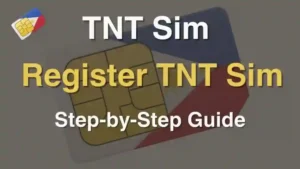How to Spot and Avoid Phishing Scams

Phishing Scams are getting to be progressively common, and they pose a noteworthy risk to individual and monetary security. In today’s advanced age, where much of our communication and exchanges happen online, Phishing Scams can take numerous shapes, making it pivotal to get it how to spot and dodge them. Phishing Scams are false endeavors to obtain touchy data, such as usernames, passwords, and credit card subtle elements, by disguising as authentic organizations or trusted people. By learning how these tricks work and taking steps to secure yourself, you can defend your individual and monetary data.
1. Understanding Phishing Scams
Phishing Scams ordinarily include false emails, messages, or websites planned to trap people into giving touchy data. The aggressors may imitate banks, online retailers, or well-known organizations, utilizing persuading communication that shows up veritable. The extreme objective is to persuade the casualty to tap on a noxious connection, download a hurtful connection, or give individual subtle elements, which can at that point be utilized for character burglary, monetary extortion, or other noxious activities.
Phishing Scams regularly misuse the human inclination to believe recognizable names and logos. With innovative propels, these tricks have ended up more modern and harder to identify. Be that as it may, there are caution signs that can offer assistance if you recognize a phishing endeavor some time recently you drop casualty to it.
2. See for Suspicious Email Addresses and URLs
One of the most common signs of a phishing trick is a suspicious mail address or URL. Cybercriminals frequently utilize mail addresses or web addresses that take after true blue ones but may contain inconspicuous spelling blunders or bizarre characters. For illustration, an email claiming to be from a well-known company might come from an address like “support@amazn.com” instead of the true blue “support@amazon.com.”
Before clicking on any joins or opening connections, double-check the sender’s mail address. Pay consideration to any inconsistencies in spelling or space names that don’t coordinate the official websites of trusted companies. If you have any questions, visit the company’s official site specifically by writing the URL into your browser, or maybe then clicking on an interface from an email.
3. Be Cautious of Critical or Undermining Messages
Phishing Scams frequently utilize direness or dangers to weigh you into taking fast activity. For example, an e-mail may claim that your account has been compromised or that prompt activity is required to avoid your account from being bolted. These messages regularly incorporate enlightening to press an interface or give individual data to resolve the issue.
Legitimate companies once in a while inquire for delicate data by means of mail, particularly when it includes critical activities. If you get an email that undermines results or requests quick activity, it’s fundamental to stay calm and doubtful. Instead of clicking on any joins in the email, contact the company specifically utilizing their official contact data to confirm the request.
4. Check for Destitute Language structure and Spelling Errors
Many Phishing Scams contain self-evident signs of destitute linguistic use, spelling mistakes, or ungainly stating. These botches are a clear sign that the message may not be genuine. Trustworthy companies ordinarily have proficient communication groups that guarantee their emails and messages are well-written and free of blunders. If you take note of anything abnormal or amateurish in an email, it seems to be a phishing attempt.
In expansion to spelling and linguistic blunders, be cautious of excessively bland welcome like “Dear Customer” or “Dear User.” Authentic companies ordinarily address you by your title if they have your account information.
5. Dodge Clicking on Joins or Opening Connections from Obscure Sources
One of the most common strategies utilized in Phishing Scams is the consideration of noxious joins or connections. These joins frequently lead to fake websites outlined to take your individual data, or the connections may contain malware that contaminates your gadget when opened.
Before clicking on any connection or downloading any connection, float over the interface with your mouse (without clicking) to see the real URL. If the connection shows up suspicious or does not coordinate the company it claims to speak to, do not tap it. Additionally, dodge downloading connections from emails or messages that come from obscure or untrusted sources.
6. Utilize Multi-Factor Confirmation (MFA)
Multi-factor confirmation (MFA) includes an additional layer of security to your online accounts by requiring more than fair a secret word to log in. Indeed if a cybercriminal manages to get your watchword through a phishing trick, they will still be incapable of getting to your account without the moment frame of verification, such as a code sent to your phone or email.
Enabling MFA on your accounts is one of the most successful ways to secure yourself from Phishing Scams and other sorts of cyberattacks. Most major online administrations, counting mail suppliers, social media stages, and banks, offer MFA as a discretionary security feature.
7. Keep Your Program and Gadgets Updated
Phishing Scams are regularly sent with malware that can taint your computer or portable gadget. To diminish the hazard of being uncovered to these malevolent programs, it’s basic to keep your working framework, antivirus computer program, and apps up to date. Customary overhauls guarantee that you have the most recent security patches and assurances against known vulnerabilities that cybercriminals may exploit.
Make beyond any doubt your gadgets are designed to introduce upgrades consequently, and perform normal security checks to distinguish and evacuate any potential threats.
8. Report Phishing Scams to Authorities
If you get a phishing e-mail or drop a casualty to a trick, it’s imperative to report it to the significant specialists. Numerous nations have organizations committed to handling cybercrime and can give help in recouping stolen information or following down the offenders behind the tricks. For example, in the U.S., you can report phishing endeavors to the Government Exchange Commission (FTC) or the Anti-Phishing Working Gather (APWG).
Reporting Phishing Scams makes a difference specialists distinguish patterns and avoid future assaults. It too alarms others to the danger, making a difference to secure the more extensive community from falling casualty to comparative scams.
9. Teach Yourself and Others Around Phishing Scams
One of the most viable ways to dodge falling casualty to Phishing Scams is to teach yourself approximately the diverse sorts of tricks and how they work. Phishing procedures are always advancing, so it’s vital to remain educated around the most recent strategies utilized by cybercriminals.
In expansion to securing yourself, consider teaching your companions, family individuals, and colleagues around the dangers of Phishing Scams and how to spot them. By raising mindfulness, you can offer assistance others dodge getting to be casualties of cybercrime.
10. Remain Watchful and Believe Your Instincts
Ultimately, the best defense against Phishing Scams is carefulness. If something feels off or as well great to be genuine, believe your instinct and continue with caution. Continuously take a minute to double-check the subtle elements some time recently taking any action.
By remaining educated, utilizing the tips said over, and remaining cautious when managing with spontaneous messages, you can altogether diminish your hazard of falling casualty to Phishing Scams. Securing your individual and money related data is significant in the advanced world, and a few basic safeguards can go a long way in guaranteeing your online safety.
Conclusion
Phishing Scams are a genuine danger to individual and budgetary security, but by knowing what to see for, you can dodge falling casualty to them. Continuously be cautious of spontaneous messages, confirm the authenticity of communication some time recently reacting, and take steps to secure your online accounts. With mindfulness and carefulness, you can explore the advanced world securely and ensure yourself from Phishing Scams.







